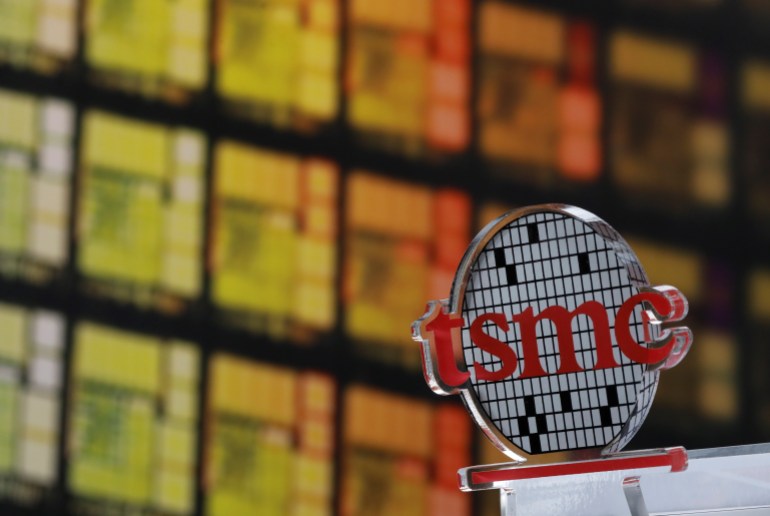Is China’s recovery helping Asia’s other big exporting economies?
Hong Kong, South Korea and Taiwan are due to report third-quarter GDP figures in the coming days, all three of which count mainland China as their biggest export market.

South Korea, Taiwan and Hong Kong all consider mainland China to be their biggest export market, but the jury is out on how strongly they are feeling the effects of a robust Chinese economic rebound.
The three Asian powerhouses, along with most other economies, have all shrunk this year due to shutdowns to contain the spread of the novel coronavirus.
Keep reading
list of 4 itemsHong Kong protests: US warns banks they could face sanctions
India reportedly considers Taiwan trade talks, angering China
The business of going out of business booms in South Korea
They will report third-quarter economic data over the coming days.
A surge in demand by China for computer chips ahead of US curbs on technology exports likely worked in South Korea and Taiwan’s favour. But Hong Kong’s political troubles and the fact that it has become ensnared in the US-China dispute are likely to keep it in recession, analysts say.
“Accelerated export recovery should bode well for the [gross domestic product] numbers” for the three economies, Prakash Sakpal, senior Asia economist at Dutch bank ING said in a research note sent to Al Jazeera.
“We expect export strength to outweigh domestic demand weakness producing a strong GDP bounce over [the second quarter],” Sakpal added.
But South Korea and Hong Kong suffered a jump in virus cases during the third quarter, likely putting a damper on their recovery.
Hong Kong’s pain
China’s economy expanded by 4.9 percent in the July-September quarter from a year earlier, as consumers returned to shops and restaurants, accelerating its rebound from COVID-19 lockdowns at the start of the year.
Its recovery is providing a much-needed source of demand, not just for other parts of Asia, but for the rest of the world, where coronavirus cases are on the rise again.
Among the three territories reporting gross domestic product (GDP) data through to the end of the month, Hong Kong, a self-governing Chinese territory, is the most dependent on the mainland for its exports. Last year, it sent 43 percent of its total exports to mainland China.

Despite that, ING expects Hong Kong to report a 10 percent contraction in its GDP – the sum of a country’s goods and services produced over a given period, and the most commonly used indicator of economic growth – between July and September compared with the same period last year.
That would be an even sharper contraction than the 9 percent shrinkage in the second quarter and the record 9.1 percent plunge in the first.
A combination of political unrest surrounding Beijing’s imposition of a national security law on the territory, the fallout of tensions between China and the US, and the coronavirus have slammed Hong Kong’s economy.
Hong Kong will report its data on October 30, the same day as Taiwan.
Resilient Taiwan
ING also expects a deterioration in Taiwan’s economy in the third quarter, with a 1 percent year-on-year contraction compared with a 0.58 percent shrinkage in the preceding three months.
But that is a relatively shallow downturn compared with the other two territories. Taiwan has been credited with an aggressive and early response to the outbreak in neighbouring mainland China, which considers Taiwan a part of its own territory.
Taiwan’s world-class computer chip industry may have also helped cushion the blow of the downturn.

“Taiwanese, Korean and Japanese exporters saw shipments of electronic components soar ahead of the 14 September US ban on China’s Huawei Technologies Co’s sourcing of semiconductors from international and US overseas entities using US technology,” Sharmila Whelan, deputy chief economist at Aletheia Capital said in a research note distributed on the Smartkarma platform.
In August, Taiwanese exports to China rose by 18 percent compared with July, led by a 14 percent rise in electronic components, Whelan wrote.
According to the Bloomberg news agency, Huawei, one of the biggest suppliers of cutting edge 5G mobile network equipment, spent months building its stockpile of critical radio chips ahead of sanctions by US President Donald Trump’s administration.
Its partner, Taiwan Semiconductor Manufacturing Co, began ramping up output in late 2019 of the crucial chips, eventually shipping more than two million units, Bloomberg quoted unidentified sources as saying.
South Korea’s soft landing
South Korean shipments to China rose by 21 percent and semiconductor exports by 27 percent in the first 20 days of September, Aletheia’s Whelan said.
South Korea is expected to report on Tuesday that its economy shrank by 1.9 percent, according to a survey of economists published by data provider Refinitiv.

That is an improvement on the previous quarter, which saw South Korea’s GDP shrink by 2.7 percent year-on-year.
But not everyone is convinced China’s rapid turnaround from its own coronavirus-driven plunge in the first quarter is giving the world a sizeable economic boost.
“The contribution of mainland China to world GDP growth this year is roughly the same as during the [2008-2009 Global Financial Crisis] – very helpful, but hardly a panacea for the global economic malaise,” Frederic Neumann, co-head of Asian Economic Research at HSBC said in a research note sent to Al Jazeera.
Neumann says China’s economic stimulus measures “fall well short” of those it delivered during the previous episode.
“As important as reviving demand in mainland China is for many companies elsewhere (think car makers, for example, or commodity producers), China is still less import-reliant than many other markets. Put simply: China may be holding up global GDP, arithmetically at least, but that’s not translating into as large a global growth impulse as if, say, Europe was firing back up.”